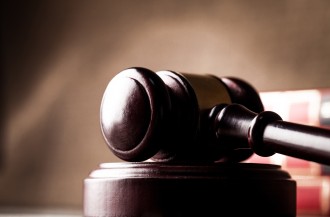March 25, 2015
PTAB Rules Lab Notebooks Insufficient to Prove Conception and Reduction to Practice
Swearing behind a reference is an enticing option for a Patent Owner, but the Board has again reminded parties that rigorous—and admissible—proof of conception and reduction to practice is still necessary.
This issue was addressed in Microsoft Corporation v. Surfcast, Inc., a consolidated opinion concerning four IPR petitions filed by Microsoft challenging one patent in which the Board found all claims unpatentable, and denied another motion to amend. In its final written decision the Board rejected Patent Owner’s attempt to prove prior conception and reduction to practice despite extensive evidence.
Patent Owner tried to antedate a prior art reference via testimony from inventors regarding conception and reduction to practice. The Patent Owner also proffered corroborating evidence in the form Exhibits consisting of emails between inventors, lab notebook pages, and other assorted papers. Decision at 15.
Petitioner challenged the authenticity of the evidence, as all corroborating Exhibits consisted of inventor-generated documents and correspondence between inventors. Patent Owner responded by providing inventor testimony to authenticate the exhibits. This was insufficient, because it meant the Patent Owner was essentially authenticating documents corroborating inventor testimony with further statements by the inventor. Accordingly, the Board deemed the authentication defective, as it was not sufficiently independent. Id. at 16-17.
Patent Owner further argued that corroboration was not necessary when a party attempts to prove conception and reduction to practice through use of physical exhibits. The Board disagreed, that corroboration of the dates in the exhibits purported to establish conception is still required. Id. at 17.
Perhaps envisioning an appeal, the Board still proceeded to analyze Patent Owner’s evidence of reasonable diligence towards a reduction to practice. Patent Owner offered invoices from Patent Owner’s law firm, time entries from an interested party, and declarations of two interested parties who weren’t an inventor. Here again, though, the Board rejected Patent Owner’s documentary evidence because it was not authenticated by a non-interested person (instead, the authentication declarants each had an interest in the outcome of the case). Id. at 18-19.
The Board further noted that even if the corroboration was adequate, diligence was not proven on the merits. The expert testimony purporting to support diligence in reduction to practice was by an expert who worked on later-assigned matters out of chronological order, creating a week of inactivity on the subject application and several gaps in activity. Id. at 20-21.
Accordingly, the Board found that Patent Owner also failed to prove reasonable diligence to a reduction to practice. Id. at 20.



































